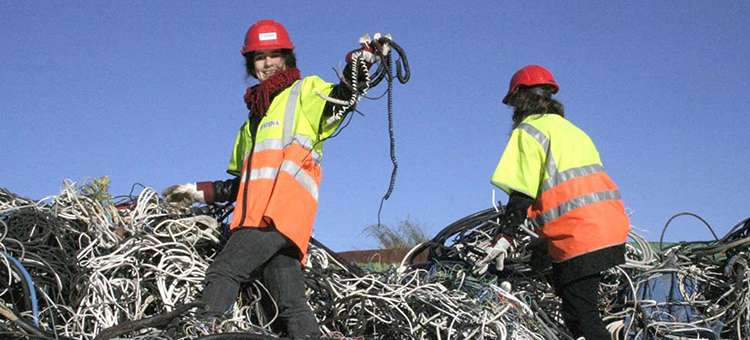How to reuse materials from trash

Most people can agree that it would be more sustainable to reuse materials in the trash that we throw away to make new products. Even though, it's not that much of the waste that is being used again. What is it that makes recovering resources from waste so difficult? In the doctoral thesis "Designing out waste: exploring barriers for material recirculation" by Isabel Ordonez Pizarro we find out what some of the common problems are when it comes to recirculating materials in society and suggestions for how to overcome them.
Since the topic is so broad, Isabel has done several studies where she has looked at three different stages that might be needed to recirculate materials in society, and the material flow between these. The stages are production, use of products and disposal of products.
"By comparing the results found in all these studies together, we could see that there were six main problems common for all stages. For example lack of reliable information on secondary materials and unclear responsibilities. The results gave us a better understanding of the difficulties for material recirculation in society. To be able to work in waste management, production systems or sustainable consumption, you need to be aware that these are stages inside a larger recirculation system, and that all stages need to move towards the same goal of material recirculation," Isabel says.
To be able to reach the goal of material recirculation, Isabel has four suggestions for policy instruments and argues that designers working in the waste management branch would facilitate collaboration with production and waste sorting for users.
Most of the research done in this field have been about how to change the production, for example with "designing for recycling" or by implementing leasing systems in industry that allows producers to get their products back for remanufacturing and recycling. In Isabel's research, she chose to see if it is possible to recirculate materials that are discarded today. Starting with waste management instead of production.
"Resource recovery from waste has been covered by the waste management branch, but not specifically with the goal of making new products. So, to look at this problem with my professional perspective as an industrial designer is something different and my results are both expected and unexpected. For example, it was expected to see that designing with waste materials is difficult to do. With all the available sustainable design methods I expected more designers to actively include "End-of-life" considerations when they do product development. I was also surprised to learn how much recyclable or bio-degradable material is being incinerated due to a lack of waste sorting," she says.
"In general, I think that people who are interested in circular economy or material recirculation will find my work useful. But I still think that it's much work left to do. I would like to establish material recirculation hubs in urban areas, where local producers, secondary material providers, waste managers and makers can meet and create new ways of collaborating to enable material recovery. I also find it interesting to develop more efficient, decentralized waste management solutions and I believe that it would help users to sort their waste better," Isabel says.
Isabel will be presenting her doctoral thesis "Designing out waste: exploring barriers for material recirculation" on January 27 at 13.00 in Virtual Development Laboratory.
After the defence, Isabel would like to apply for new project funding to continue doing research that may help material recirculation. She is also looking forward to finally get some time to do her own design again, with discarded material of course.
Provided by Chalmers University of Technology



















